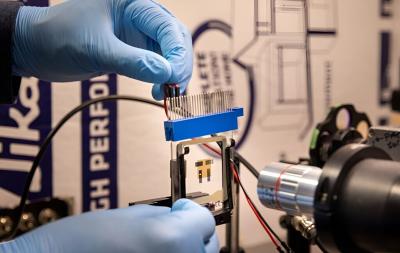Researchers from the University of Michigan, in collaboration with OLEDWorks, has developed an OLED device that converts near infrared (NIR) light into visible light and amplifies it more than 100 times. Compared to current night-vision systems based on image intensifiers, this device could enable a much more efficient and light-weight solution.
The OLED device integrates a photo-absorbing layer inside the OLED stack, that converts infrared light into electrons. Those electrons are converted into visible light photons via the OLED layers - about five photons are created for each electron, and some of these photons are re-absorbved, converted into more electrons, and then even more photons, creating a great amplification of the absorbed NIR light.
The researchers say that this is the first demonstration of high photon gain in a thin film device. The device also exhibits a sort of memory behavior that could have applications in computer vision. Known as hysteresis, its light output at a given moment depends on the intensity and duration of past input illumination. Although the memory behavior introduces some challenges for night vision applications, it may create an opportunity for image processing that works more like the human visual system—where biological neurons pass signals on, or not, based on the timing and strength of incoming signals. The ability to remember past inputs could make these OLEDs a good candidate for the type of neuron-like connections that enable an input image to be interpreted and classified without having to process the data in a separate computing unit.


